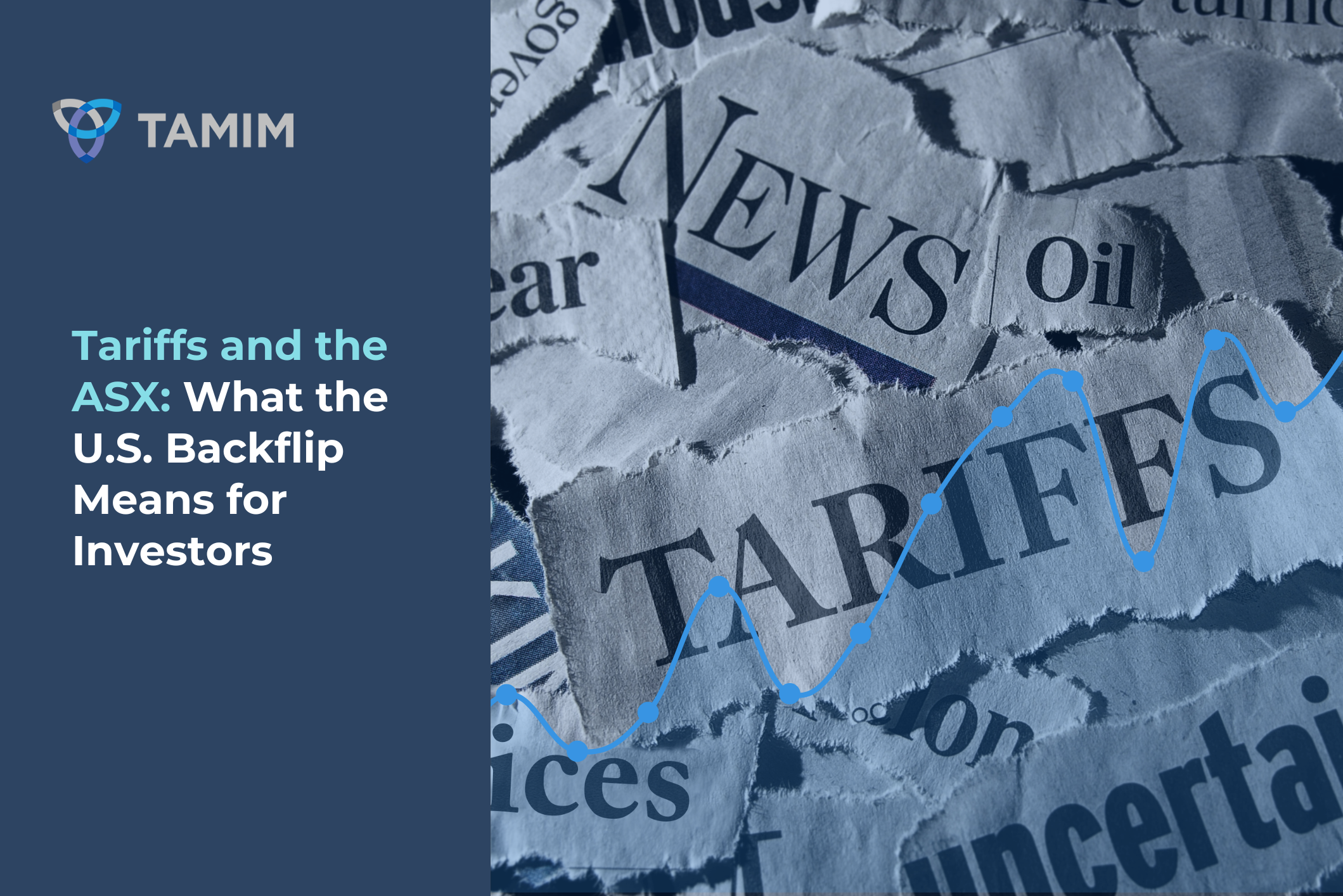The past week has seen global markets whipsaw amid the latest U.S. tariff announcements, with Australian equities caught in the crosscurrents. Initially, global equities shed over $5.4 trillion in value following sweeping U.S. tariffs on imports, sending the S&P 500 to an eleven-month low and sparking fears of a global growth slowdown.
Overnight, the U.S. administration announced a 90-day suspension of these heightened tariffs, shifting instead to a flat 10% “reciprocal tariff” on all imports except China, which now faces a punitive 125% rate. This move is designed to buy time for negotiations, with over 75 countries reportedly seeking discussions with Washington. Some will say this was the plan all along while others will say that Trump folded. Regardless of which it ends up being, the one thing we at Tamim expect from a Trump presidency is whipsaw new and there whipsaw price action in markets.
For Australian investors, this dramatic policy reversal has delivered immediate relief. The ASX 200 surging more than 5% on the open, the strongest since the pandemic selloff in March 2020. However, while the short-term reaction has been positive, the broader forces reshaping the global economy remain firmly in play.
Global Shockwaves, Local Consequences
Even with the tariff suspension, the underlying fragility of the global trade environment has been exposed. Australia remains a highly trade-exposed economy, with key sectors like resources, energy, and agriculture heavily reliant on export demand particularly from China, which has been directly targeted by the U.S.’s harsher tariff measures.
While the immediate market relief rally is welcome, the ASX remains sensitive to any signs of slowing Chinese growth or disruption to global supply chains. Sectors like materials, energy, and industrials will continue to see volatility, especially if the global economy trends towards slower growth and fragmented trade flows.
Interestingly, some Australian exporters particularly in beef may stand to benefit from the reordering of trade relationships. With China imposing retaliatory tariffs on U.S. agricultural products, Australian producers could gain market share, at least in the near term.
Currency, Capital and Inflation Considerations
The Australian dollar remains a key barometer of market sentiment. Global uncertainty typically sees the AUD weaken against the U.S. dollar, which supports exporters but raises costs for importers and consumers. Inflationary pressures may linger, especially if the global trade environment remains unsettled.
For investors, a weaker currency coupled with global risk aversion may lead to greater interest in Australia’s income-generating assets. Defensive sectors, such as infrastructure, healthcare, and REITs with reliable cash flows, may continue to attract capital as global investors seek stability.
Beyond Tariffs: Structural Shifts Are Driving Markets
It is important to remember that the tariff dispute is only one part of a much larger story. The global economic landscape is undergoing structural realignment. The framework that supported decades of globalisation, low inflation, free trade, cheap capital is under pressure from rising debt levels, geopolitical rivalry, and a push for national self-sufficiency.
Australian equity markets, like others globally, are adjusting to this new reality. Valuation multiples, especially in growth sectors that benefitted from ultra-low rates, may remain under pressure. Conversely, companies with pricing power, stable domestic earnings, and exposure to long-term structural themes such as energy transition or infrastructure are likely to be better placed.
Australia’s Policy Position and Market Outlook
Australia remains relatively well-positioned from a fiscal and financial system standpoint. However, Treasurer Jim Chalmers has noted that while direct impacts from U.S. tariffs are manageable, the broader global slowdown risk remains a key challenge for Australia’s growth outlook.
The Reserve Bank of Australia faces a complex balancing act. The prospect of imported inflation via a weaker currency needs to be weighed against slower global growth and domestic economic fragility. This dynamic reinforces the importance of selective investing and maintaining exposure to businesses able to manage through a more uncertain macro environment.
TAMIM Takeaway
At TAMIM, we view the overnight tariff suspension as a temporary reprieve not a resolution to the deeper challenges facing the global economy. For Australian investors, this environment demands focus, discipline, and selectivity. We continue to favour companies with robust domestic earnings, strong balance sheets, and the ability to generate reliable cash flows in a world of heightened uncertainty. Businesses aligned with key structural themes such as infrastructure development, energy security, digital transformation, and strategic manufacturing remain core to our outlook.
While headlines may swing markets day-to-day, the long-term investment opportunity lies in understanding the real forces reshaping the global and Australian economy. Those able to position ahead of these structural shifts rather than react to short-term noise will be best placed to generate sustainable returns over the coming cycle. Again, we also remind investors that when markets present opportunities through volatility driven sell-off those are the times to get interested. Our philosophy is when all those around you are afraid it is time to buy and when those around you are greedy it is time to be cautious.

